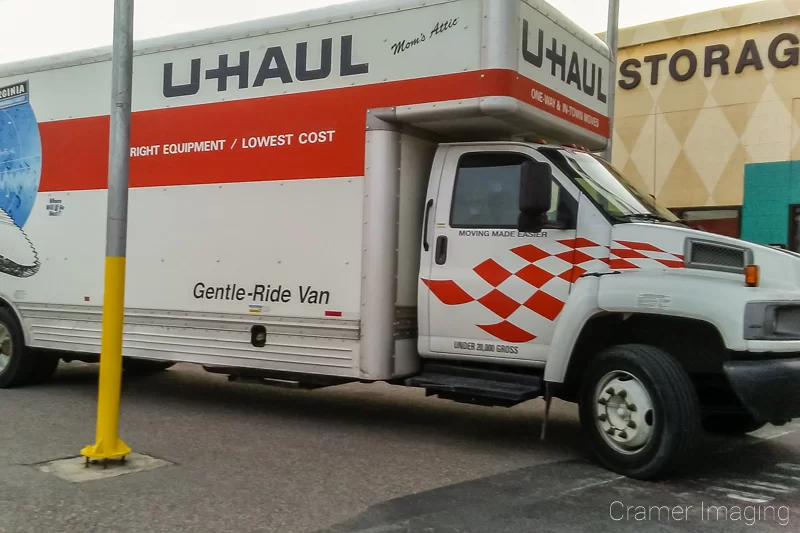It’s moving day and you’ve got a lot of work to do. There’s a moving truck to fill up with your personal possessions. You carefully pack all your furniture, dishes, and other boxes to avoid damage. Have you thought about how you’re going to transport your wall art safely? No? Well, that’s what we’re talking about today. Let’s discuss how to care for your fine art when you move.
You’ve put some money into having quality art worth displaying on your wall. It’s something which you look at every day. It might be worth a significant amount of money today or in the future. I would want to protect my wall art from damage it could sustain during a move. That way I can continue to enjoy looking at it for years to come.
The thing is that moving fine art isn’t that difficult. It does take some thought and some research though. Your first thoughts should include how to care for your fine art as you move. However, your first decision is whether or not you want to move the art yourself or hire professionals to do it for you.
Hiring Professionals
When it comes to moving high-end art, most people recommend using a professional moving company with specific expertise in moving fine art. With this expertise, you are better guaranteed that your expensive wall art will arrive at your destination intact.

If you choose to hire professional movers for the task, make sure you do some research first. Some questions to check out include:
- Do they operate in both the area you are leaving and the area you are moving to?
- What kind of experience have others had who used their services in the past?
- How do they handle the kind of art you need moved?
- What kind of insurance do they carry against damage and theft?
If you do find a professional moving service you feel you can trust, then hire them if you can. It will make your life a lot easier.
A final point to consider with professional movers, keep an eye on them. If they’re truly professionals, they won’t mind extra supervision from you as the customer. After all, we are talking about strangers handling your personal possessions. Who will care more about proper handling of your fine art?
Moving Art Yourself
On the other hand, you might end up moving your fine art yourself. Perhaps you don’t have enough pieces to justify the extra cost or maybe you’re moving from or to somewhere which the movers won’t go. Maybe you just feel you can only trust yourself with your own valuable pieces. Whatever your reasons for moving your art yourself, some forethought and planning will help you.

Moving fine art safely is all about protecting it from possible damage which could happen during the move. So, let’s talk about how to protect and care for fine art while moving it.
Option 1 (Cheapest but Less Reliable)

Perhaps the best known and cheapest method out there of moving fine art is wrapping it up carefully in moving blankets and attempting to protect it from shifting around during transport.
Thinner or rougher blankets, such as the one depicted here, don’t offer as much protection as thicker, softer, and more padded blankets do. Choose your blanket(s) for packing carefully and with the best art protection in mind.
If the art object is small enough, you might even carefully pack it in a box before loading it onto the truck. For something fairly easily replaced in a cheap frame, this method probably isn’t a problem. In fact, it should do very well for low-end art of any kind.
For something more important or valuable, this is not a method of transport I would recommend.
Option 2 (Better Results but More Expensive)
For properly transporting something much more valuable, you will need to take extra precautions to make sure it will survive the moving process intact.
1. Image Protection
First off, you need to protect the image itself. If we’re talking about a photograph (or other form of art) with glass in front, then the glass already protects art itself. If you’re dealing with a painting or print on canvas, it can be damaged during the move just by things pressing up against or into it. Some paintings (like oils) aren’t fully dry for years after being painted, so you must take extra care.

I highly recommend wrapping fine art in glassine paper. It is basically silicone impregnated paper. It won’t stick to things, it’s moisture resistant, and it can be made airtight. This would be particularly useful if you’re wrapping something like a oil painting or giclée on canvas thanks to the lack glass in front. You need the glassine to keep the potentially sticky and delicate paint or ink from getting damaged on whatever you use for padding. In a financial pinch, parchment paper used for cooking could also work.

Also remember that, while glass will protect an image, the glass itself is still fragile. Make sure that you are also taking the proper steps to protect the glass in front. If that breaks, your image will be damaged or destroyed.
2. Corner Protection
Next, let’s think about the corners. Most art has corners in some fashion. Corners tend to stick out and catch on things. Corners also tend to get dinged during moves. You’re going to want to put something on those corners to protect them. For protections options, you have a couple different options: you can use cardboard corner reinforcement or you can use an art box.
If you choose to use a good art box, it will probably protect the corners by itself but you might want to use spacers anyways. If you don’t use a good art box, you should put something on the corners to protect them. Most people use cardboard corner protectors. You can buy some or make some out of extra cardboard. Put them on the corners and tape them into place on the back.
For anything expensive, I would recommend going a step further. Get a good art shipping box from some place like Uline. They’re expensive but they should further protect your fine art investment. If you’re shipping something without glass in front, be sure to wrap in the glassine paper first. If you’re really paranoid, you could use some kind of spacers to make sure that nothing contacts the surface of the image, but the glassine should suffice for most instances.

If you’re feeling brave, or perhaps going to move your art in your car, you might be able to stop at simple corner protection and be just fine. I wouldn’t but you’ll probably be ok.
3. Transportation

Finally, we have to consider how to transport your art. If you’re moving multiple pieces of wall art, place them front to front and back to back so that the hanging hardware on the back of each frame doesn’t damage the front of the next frame.
Be sure to transport your wall art upright not flat. If you stack your art up flat, it will shift during transport and the hardware will scratch up the frames. If you’re lucky, that’s all the metal hardware will do.
Please keep in mind that no matter how carefully you pack, your art WILL shift in transit. Your best bet is to take a load containing ONLY your art to avoid damage from your other personal property. If this is not possible, due to reasons like long-distance travel, then you’ll want to pack carefully. The last thing you want is something to fall onto your art and bend or otherwise destroy it during transport.

If you don’t pack carefully, the frames will shift around during transport and scratch themselves up from the metal hardware meant for hanging them. For a good example of what that looks like, check out the photo to the left/above. Such damage is very difficult if not impossible to properly hide.
You want to pack your art so that there isn’t too much stacked on top of it and, when (not if) it shifts, your art is unlikely to fall and nothing else is likely to fall on it. This may take a few attempts before you get it right. Just get it right before you head out.
If you do end up finding that your fine art on canvas has been damaged thanks to some shifting and corners pressing into it, as long as it hasn’t been punctured, you might try this technique for fixing those stretch bubbles in canvas. It works really well to fix those unsightly bubble bulges in stretched canvas.
Conclusion
Moving fine art has to be done carefully, but it really isn’t that difficult. If you can’t get professional help, then take some time to think about packing your art. Think about how it will transport, know that it will shift, and protect the image if glass won’t protect it already. If you take the proper precautions and pack well, your art should make it to your new home in pristine condition ready for display. Care when moving with fine art is actually easy.
Have you had any experiences with moving your fine art? Have you hired professional movers to help? Or have you successfully or unsuccessfully moved your art to someplace new? We’d love to hear about your experiences. Leave them in the comments section below so we all can learn together.





